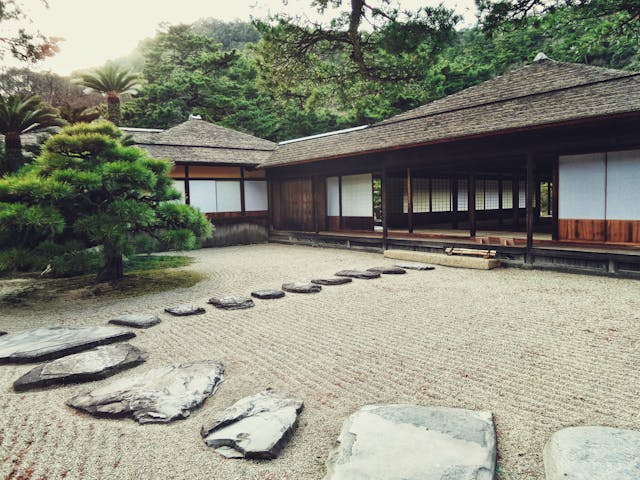America’s most inspirational gardens has been Hollister House in Connecticut for the last several decades. Owner George Schoellkopf transformed his own estate into a sequence of architectural chambers brimming with opulently beautiful flora, drawing inspiration from well-known English gardens. A defining feature of English gardens, the contrast between formality and wildness has elevated Hollister House to a status symbol in and of itself. However, its garden design concepts may work their magic in yards of any size.

Plan with Stairs in Mind
A staircase may be made into more than just a means of transportation between levels; it can become an architectural element. At Hollister House, local granite slab stairs are arranged haphazardly, softened by violets that have seeded in the crevices and yellow-leaved dwarf spirea.
Use Water Features to Bring Life
The recirculating pipe in this rectangular pool in the walled garden of Hollister House creates a subtle ripple that heightens the tranquility. A bowl or trough, or any modest water feature, can reflect the sky and attract birds and dragonflies, adding peace to a garden.
Recurring Plants
Experts in landscape design often use repetition because it is visually appealing and guides the eye across an area. Here, the yellow tulips and the shrub against the wall both mirror the chartreuse hue of the miniature spirea that cascades down the stone stairs. One of the greatest hues for bringing some lightness to a planting design is chartreuse, often known as lady’s mantle or creeping Jenny.
Let the plants self-seed.
Structure is provided by the brick walk, granite stairs, trimmed boxwood, apple, and crabapple trees; spontaneity is added by the forget-me-nots that have sprung at the path’s sides. In a year or two, if you plant a forget-me-not or scatter some of its seeds across your garden, you will have its sky blue haze in unexpected places—the kind of thing that adds character to a landscape.
Use Pots to Make Stopping Points
It is a great method to momentarily pause the eye when you place a beautiful pot on an axis. Both Hollister House and Sissinghurst often include this architectural feature. Below, a pansy-filled, patinaed kettle requests that you step around before passing under the archway. A garden that has sections separated by hedges or walls, such that you can only see one from the other via a gap, surprises and pushes you forward.

Observe Paths
Garden walkways at Hollister House are the geometric strands that entice you across the several richly planted areas. The border of the stone walk is softened by forget-me-nots, lady’s mantle, lungwort, daffodils, and tulips at the other end of the property where the old house meets the brick barn construction. George has restricted his color scheme to yellow with hints of white and blue to create coherence.
Use Hedges to Create Geometry
A parterre is a formal arrangement made up of many beds filled with white tulips and bordered with neatly clipped boxwoods; it looks especially good from above. This is a garden design concept that works on any size: Consider edging four tiny square beds with a thick border of parsley or thyme, or softly clipping germander to create a frame around a unique plant, such as a tall blooming allium or rosebush. The Japanese maples just outside the garden and the center urn both include deep burgundy accents.




